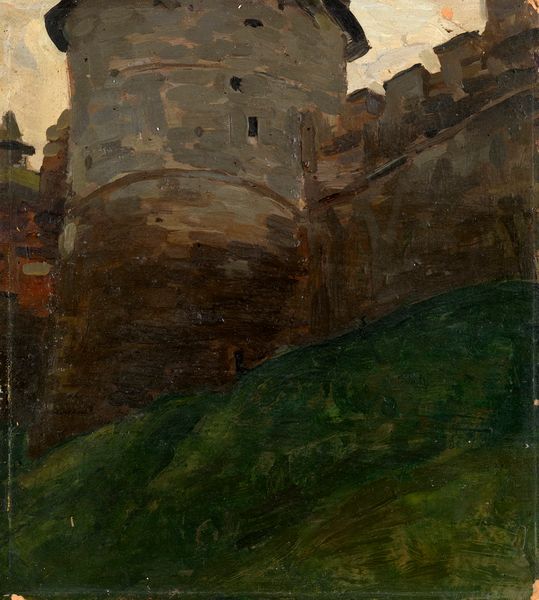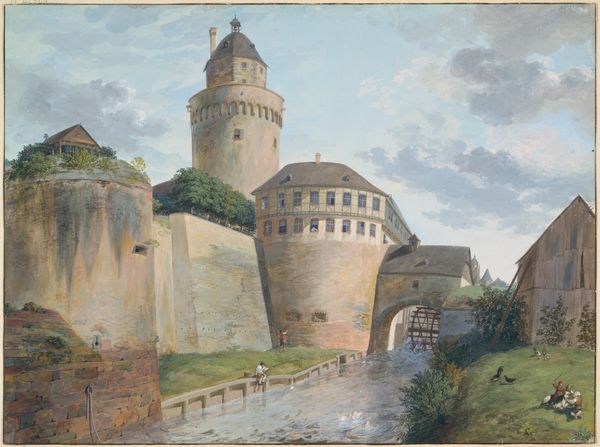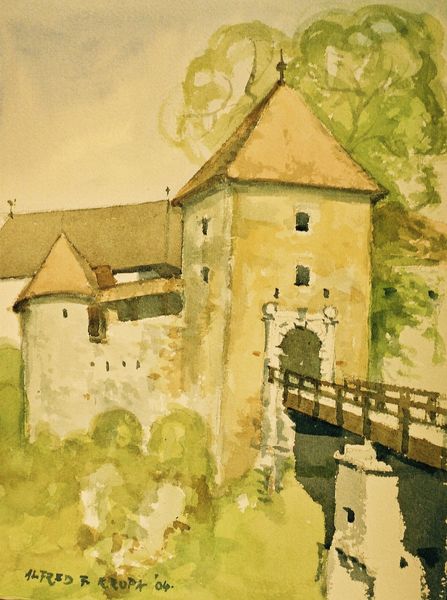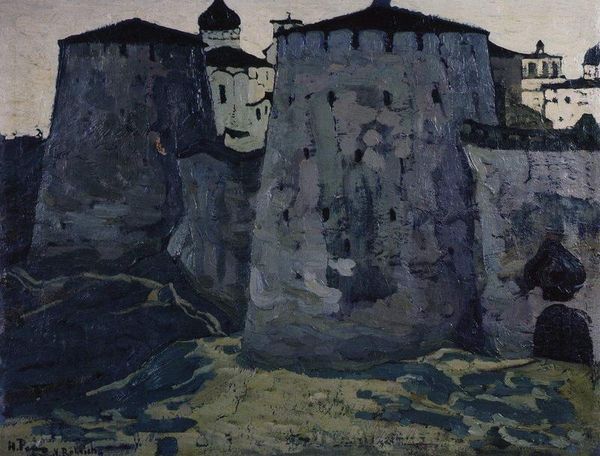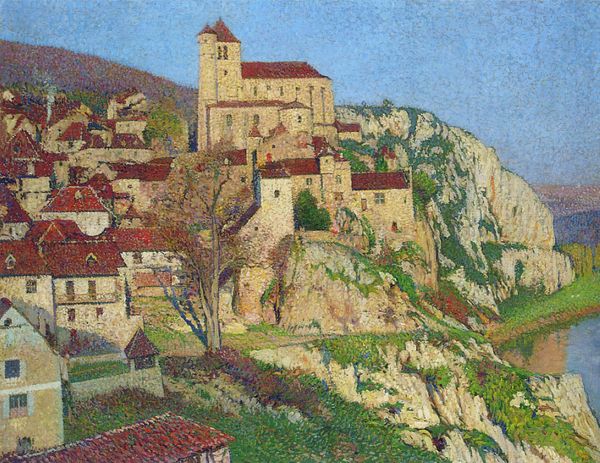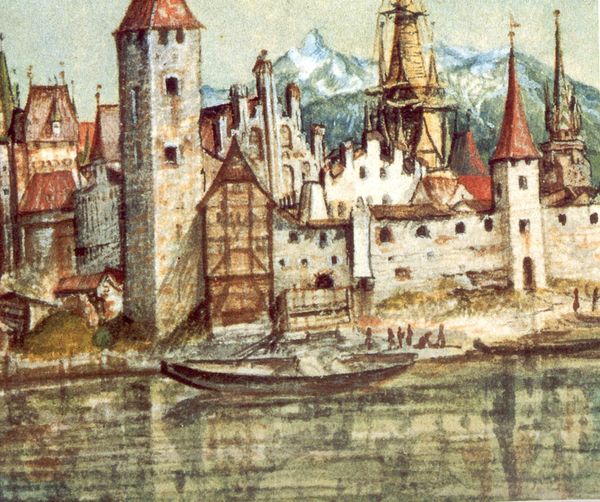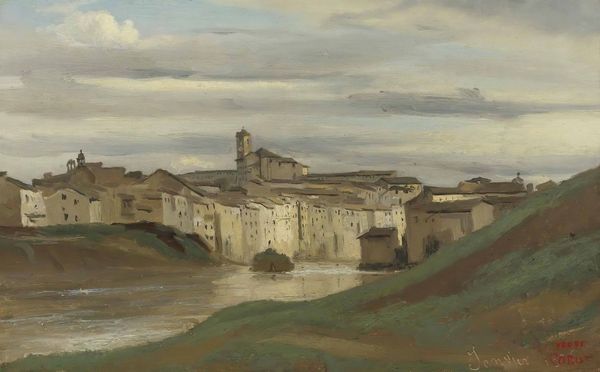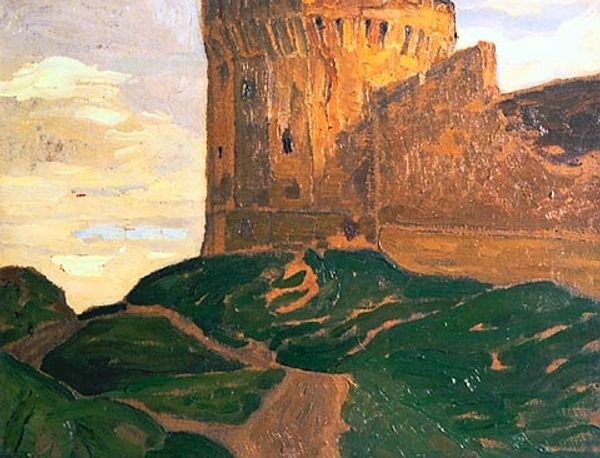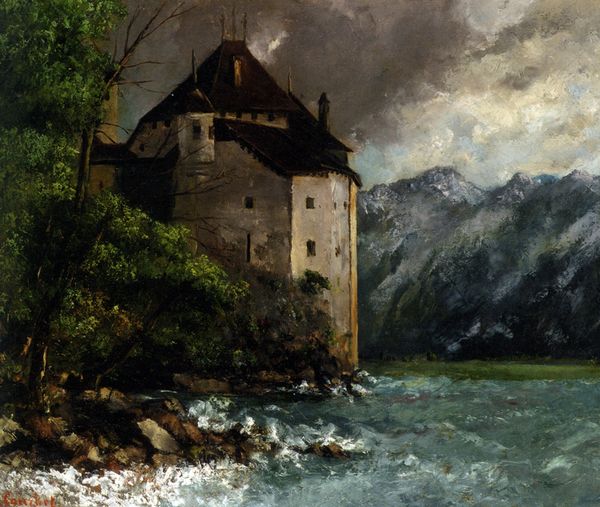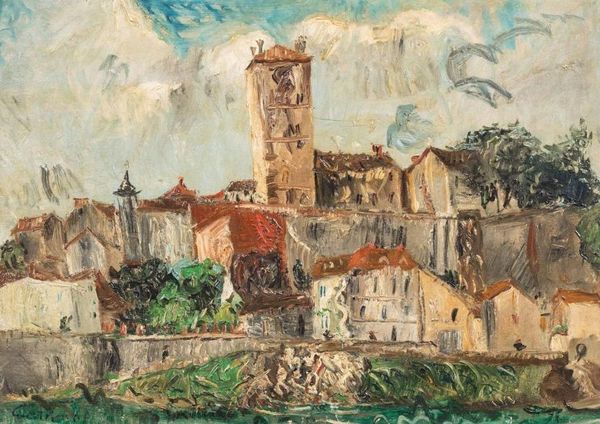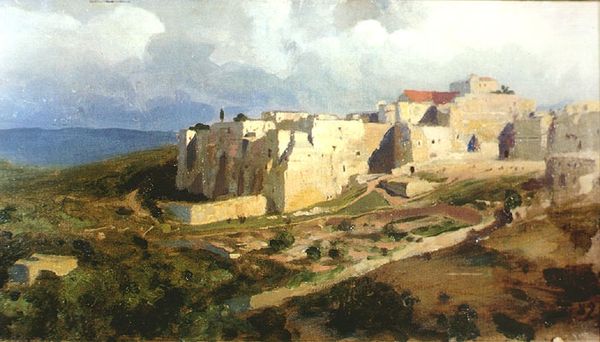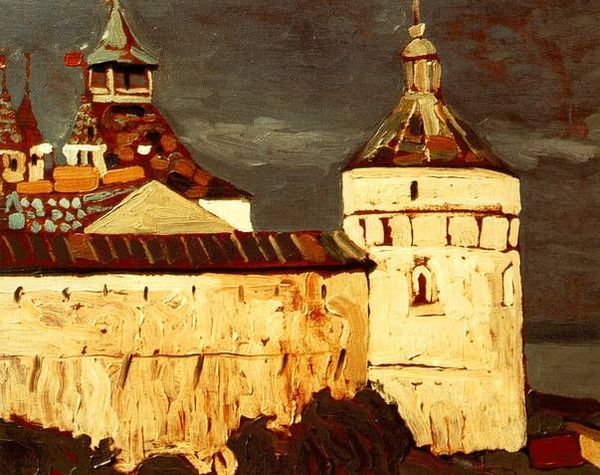
Dimensions: 18.5 x 26 cm
Copyright: Public domain
Curator: What immediately strikes me is this painting’s atmosphere. There’s a muted light that evokes such a profound sense of loneliness, doesn't it? It's almost like a stage set, melancholic, brooding... Editor: Indeed. This is Isaac Levitan’s “Fortress. Finland.,” dating back to 1896. Executed en plein-air with oil paint, it demonstrates his landscape skills, specifically his interest in architecture nestled within its environment. You have to think of what that castle meant materially, both as a building and an employer for labor. Curator: Materiality indeed. Look at how Levitan applies the paint. The thick strokes around the water and foliage! It's so visceral. You can almost feel the damp air and the rough texture of the stone. It looks more about evocation than precision. Editor: The means of production clearly shaped its form. It emphasizes, or possibly idealizes, architecture within its socio-geographic context. Look how that contrasts, and in some ways flattens, that hierarchy, considering both the laborers that built the castle, and Levitan the artist in society capturing it. Curator: I see what you're getting at... But when I look, it evokes so much more. It reminds me of half-forgotten fairytales, those where the hero must confront impossible odds. And that single point, or darkness, within the walls suggests abandonment, not triumph. A story half told, full of unspoken griefs. Editor: Certainly the canvas displays technique through plein-air practices in oil paints that served his impressionistic style of landscape painting, but more significantly these tools allow the exploration of production in Tsarist Russia as well, capturing social structures that enabled works like that architecture to exist, both romanticized in and reliant on its context for continued survival. Curator: Maybe, in some way, it speaks about the mortality of empires themselves... And, maybe that castle knew stories it was too weary to tell. Editor: An interesting proposition; ultimately it allows us a chance to observe a brief insight of a specific social ecology, where all players rely on material relationships.
Comments
No comments
Be the first to comment and join the conversation on the ultimate creative platform.
